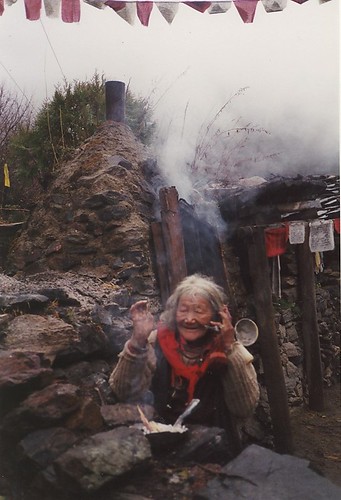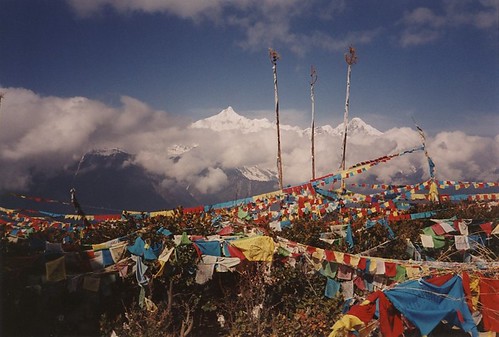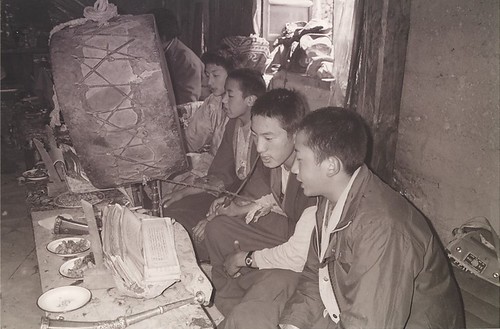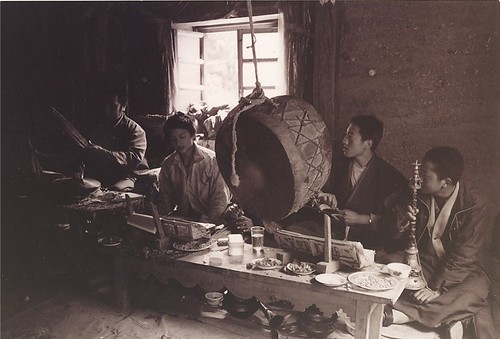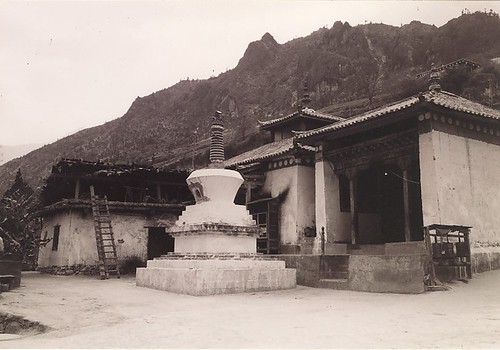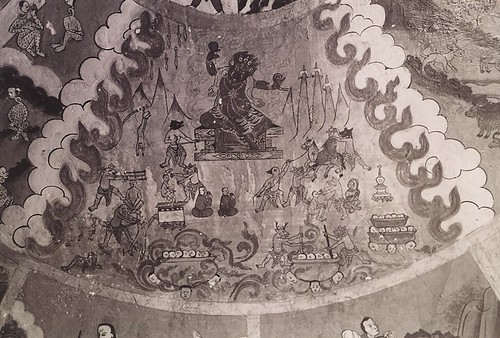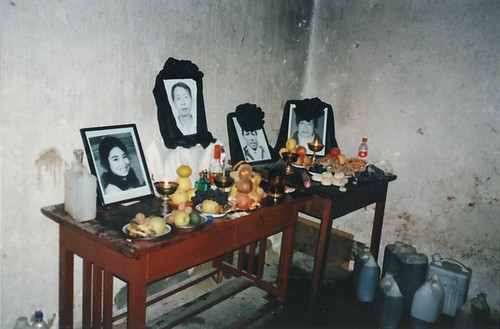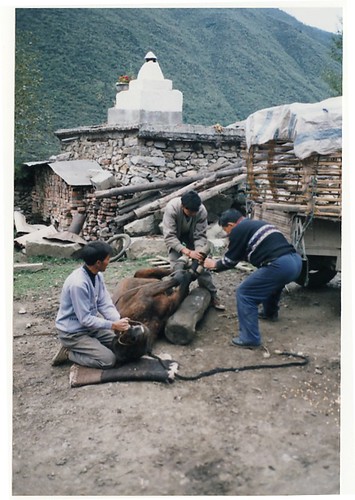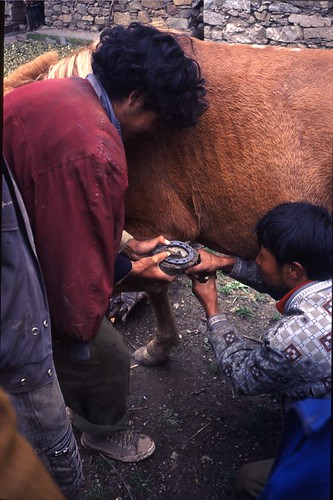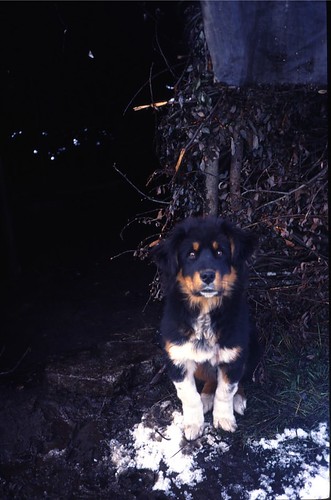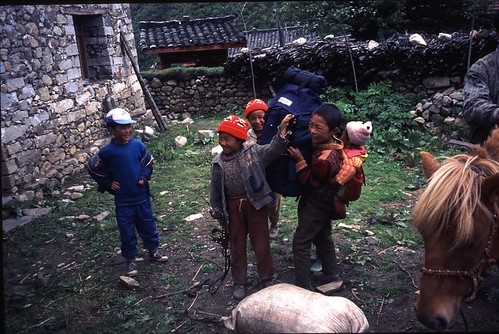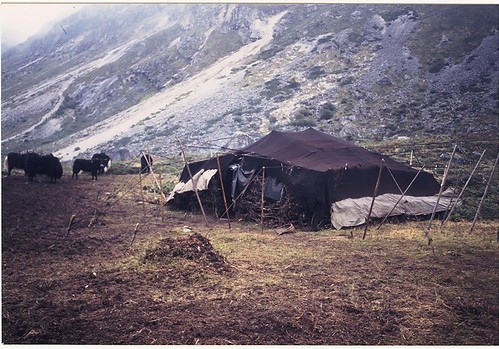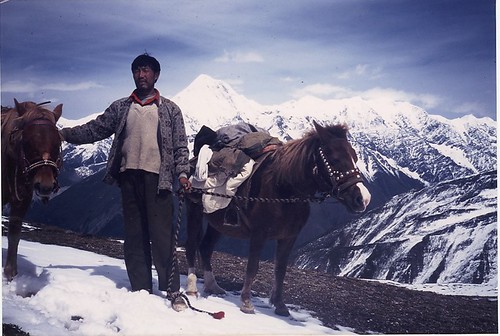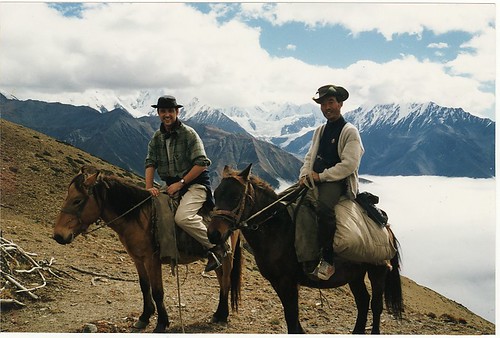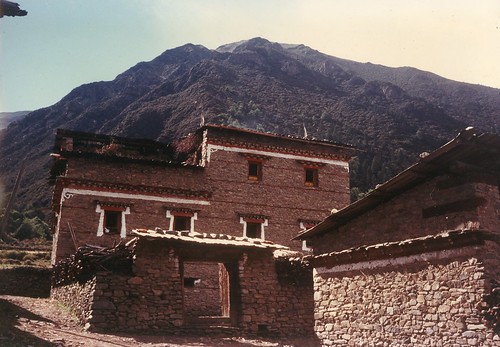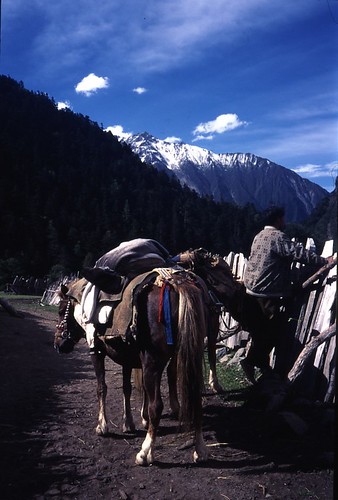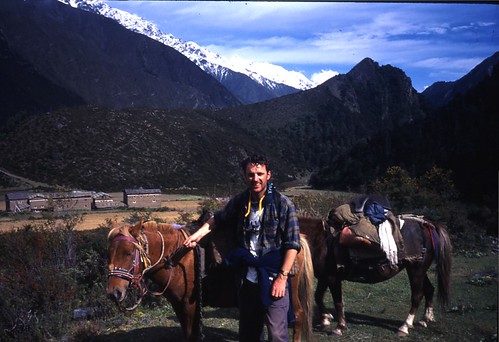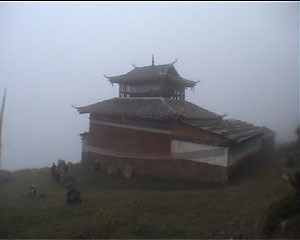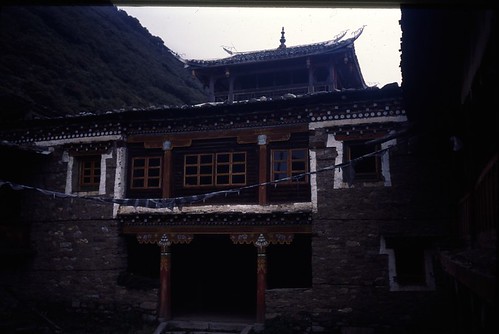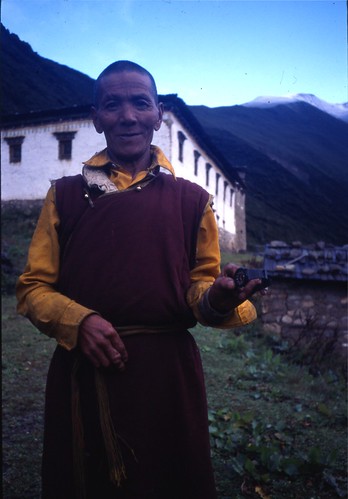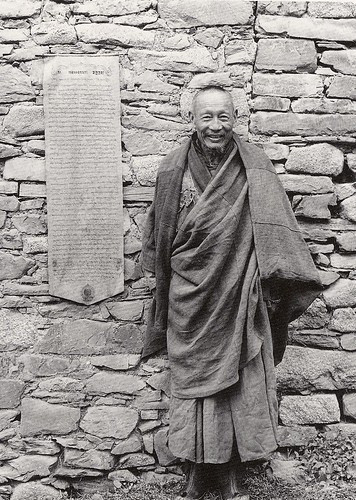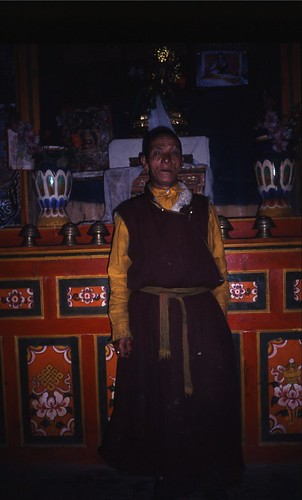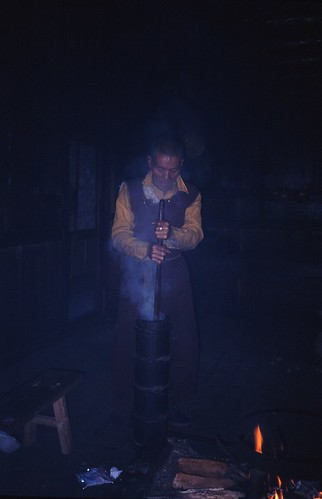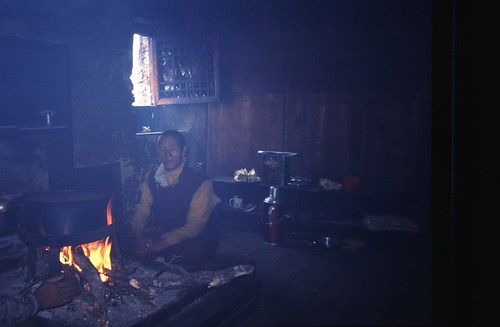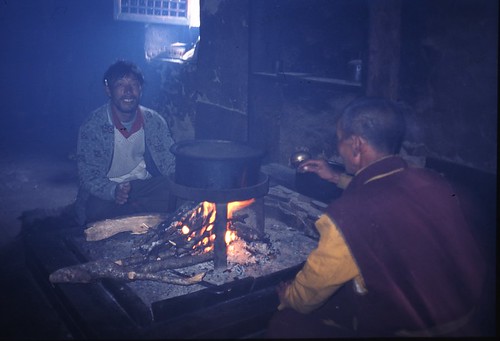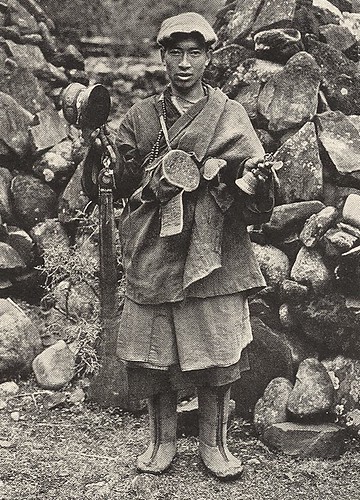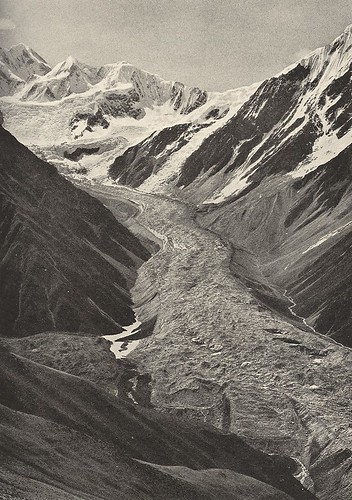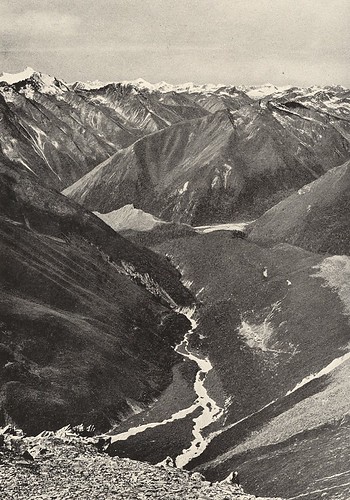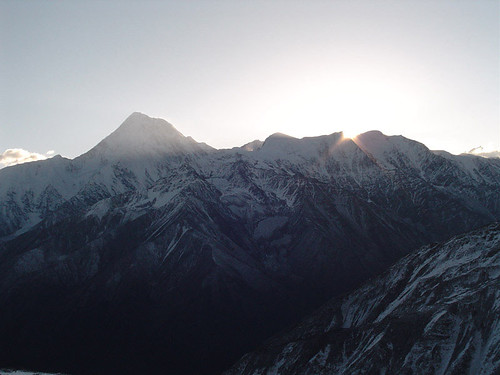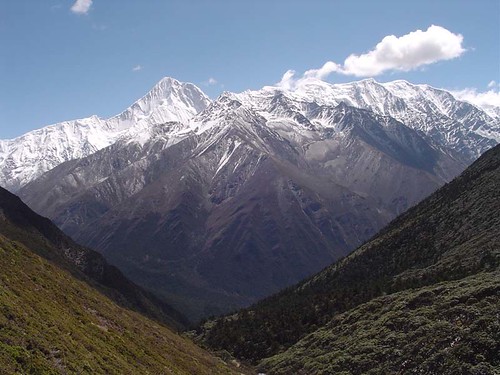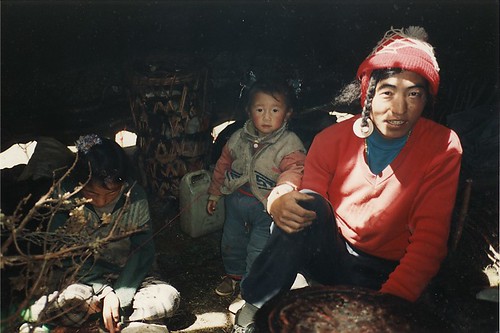
Interior view of our cramped but cosy black tent. The weave of the hair is quite loose, allowing in a bit of light - and the wind!. When it rains, a few drips of rain to get through. But when it rains heavily the yak hair swells, closing the gaps.
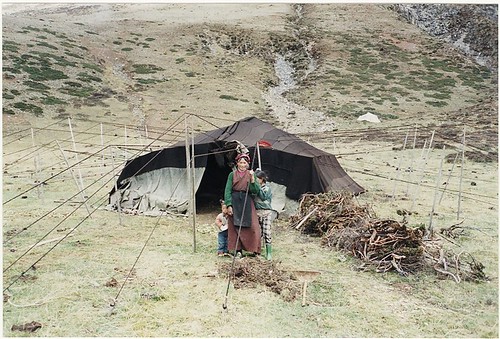
Another view of the typical yak hair herder's tent. Vicious guard dog not pictured.
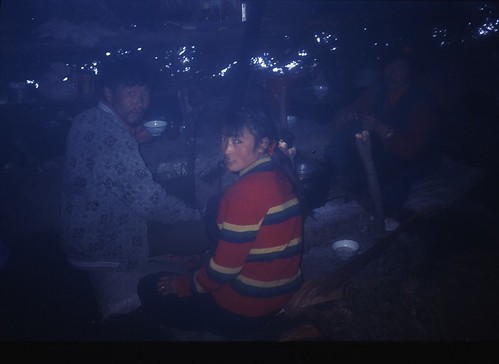
My guide Ger-ler having a cup of yak butter tea in the tent. You can see some of the gaps that let the wind and rain in.
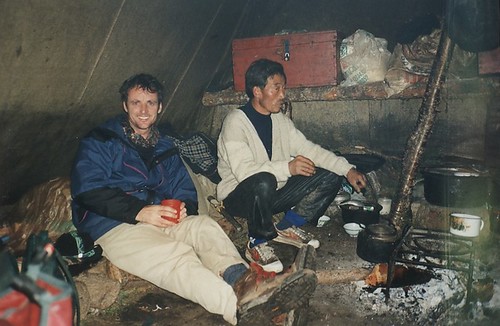
Put the kettle on ...
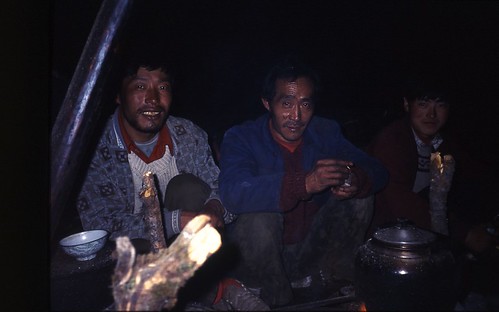
Ger'ler with our hosts in the black tent.
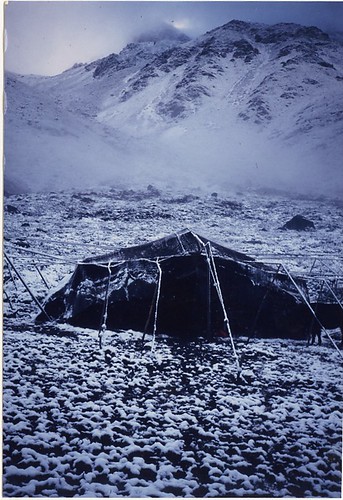
The following morning I woke up freezing cold, despite my down sleeping bag, air mat and bivvy bag. The snowfall during the night had transformed the landscape into a wintery but beautiful mountainscape.
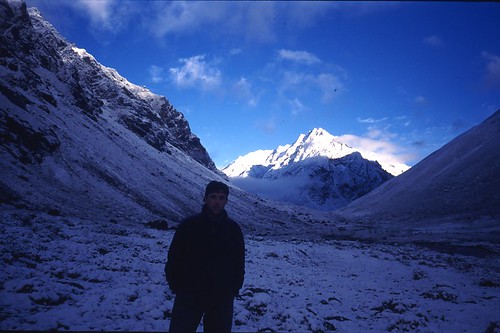
This was the bitingly cold view I got when I first emerged from the tent. It is looking towards the Djesi Pass and the mountain called Chiburongi. The sun has only just touched the top of the peaks.
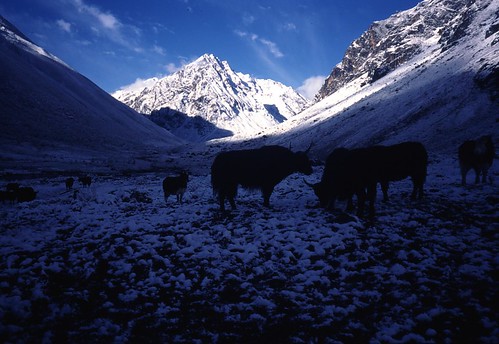
A few minutes later the sun's rays were reaching down into the valley
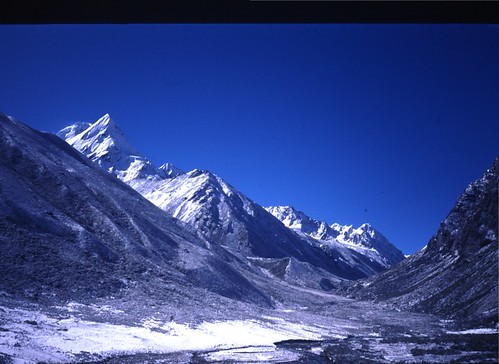
As we set off towards the Djesi Pass, the mountain Chiburongi came into view.
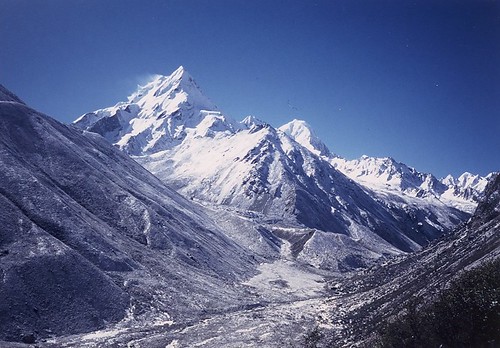
This is a snap I took of Chiburongi on the way up to the Djesi La.
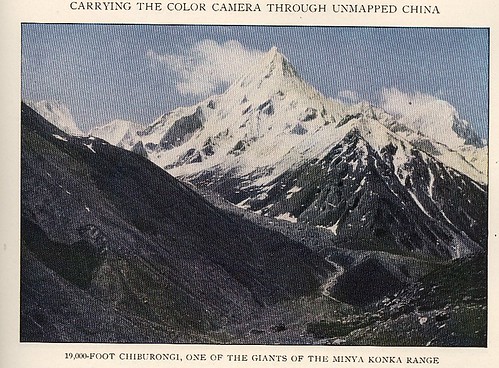
This is the same view captured by Joseph Rock with his autochrome colour prints 80 years earlier.
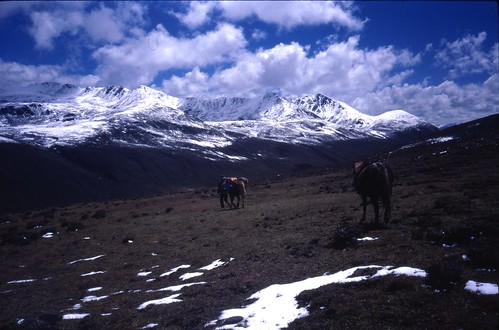
As we crossed over the Djesi La, we entered the top end of the Yulongsi valley. It was weird. There were vultures hopping about on top of the pass, and just after we descended a huge grey cloud billowed over the pass behind us and chased us down the hill like it was alive. We tried to outrun it, but it was soon on us and enveloped us in a blizzard. It was a complete whiteout, and I thought we'd had it. But as suddenly as it appeared it cleared up and seemed to vanish into thin air, leaving only a light mist and a small fall of snow that soon blew away.

Here I am on the ridiculously small pony. With my long western legs buckled at 90 degrees to fit into the stirrups I found it excrutiatingly uncomfortable to ride for several hours a day. I also had the most skittish nag, which would buck and try throw me off every hour. It eventually succeeded in doing this just over the pass, and I thought I'd broken my arm for a while. Fortunately it was just bruised, and I swapped with my guide for a much more placid horse.
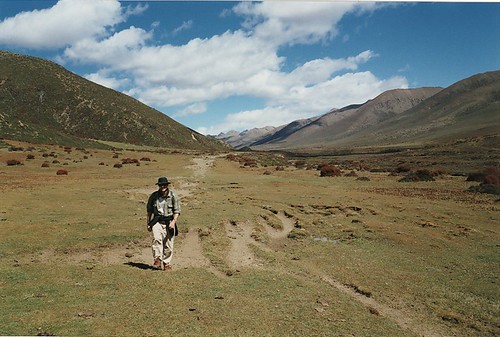
As we descended into the much flatter Yulongsi valley I decided to walk to relieve my aching backside and calf muscles. The sheer size of the landscape was just overwhelming - it just went on and on for hour after hour of nothing. There were no signs of human life here at all.
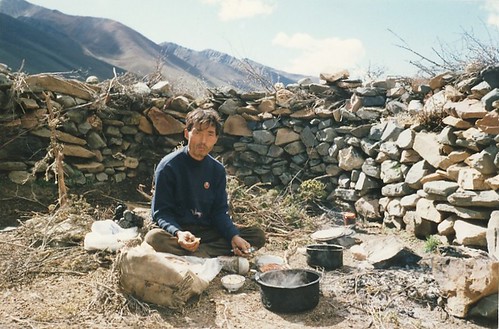
For our second night in the hills we camped at the top end of the Yulongsi valley at the foot of the Djesi La. Here is my guide Gong Xianyao, in the sheep pen that we used for shelter. He had no sleeping bag - just a camp roll. I don't know how he survived the night in those freezing temperatures, but he refused all my offers to share the tent.
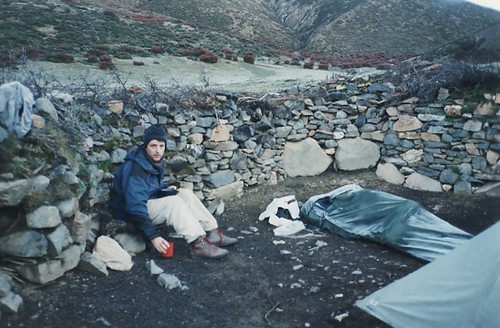
When we woke the next morning it was again bitterly cold. The frost-covered shape in the bodybag is Keith Lyons, who was not surprisingly even colder than I had been in the tent. God knows how our guide survived. We were alarmed to find that he and horses had gone. We thought he'd done a runner, but he re-appeared mid morning to tell us that the horses had been scared off by a wolf in the night. It took us most of the morning to find them, high up on a ridge overlooking the valley.


Looking for the horses we climbed this ridge that must have been between 16,000 and 17,000 feet high. It did me in but the view over to Minya Konka was worth it, in retrospect.
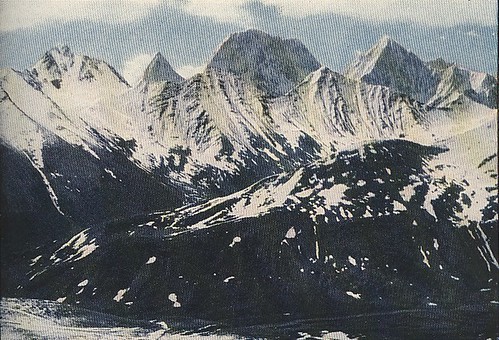
Here is a more close up view taken by Joseph Rock of the same range in 1929.
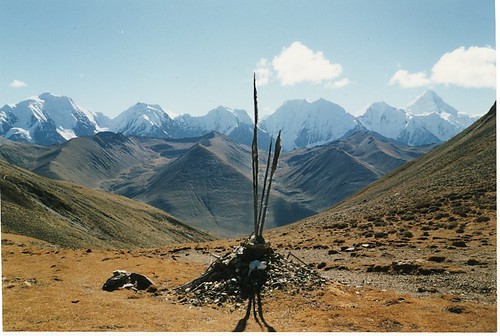
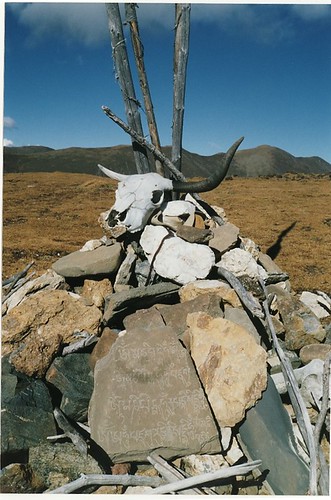
At the top of the ridge there was a kind of pass where some Tibetans had erected a cairn decorated with a yak skull and some stone carvings.
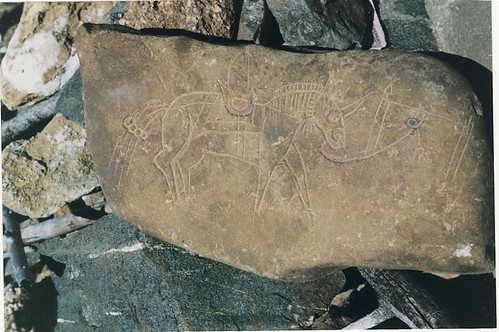
Here is a detail of the stone carving on the cairn.
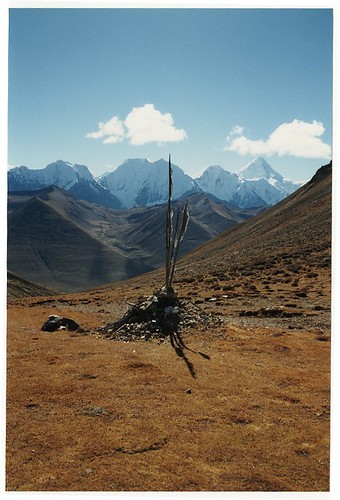

At the end of the second day in the hills we at last arrived at the inhabited middle section of the Yulongsi valley. Here our guide knew some people we could stay with in a real house.
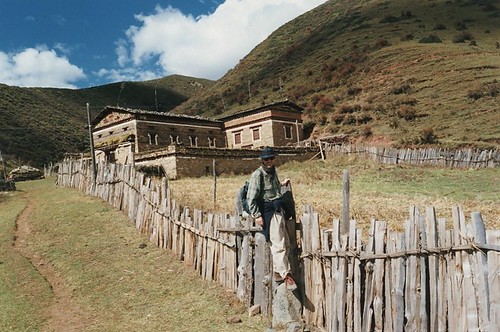
This is the house where we stayed in Yulongsi before attempting the journey over the Tsemi La. It was a typical Tibetan dwelling, with the ground floor reserved for animals, and a notched log leading up to the cavernous dark first floor where we sat around a fire place on tiny stools. The Tibetans were masters of woodwork, but for some reason made no furniture for themselves. We kipped on the grimy wooden floor, but did not sleep well, as the house had an electrical clock that played a tinny but loud Happy Birthday on the hour.
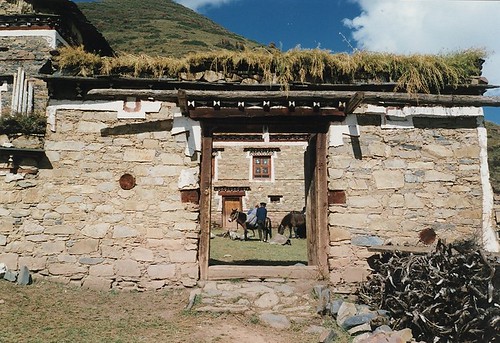
Unloading.
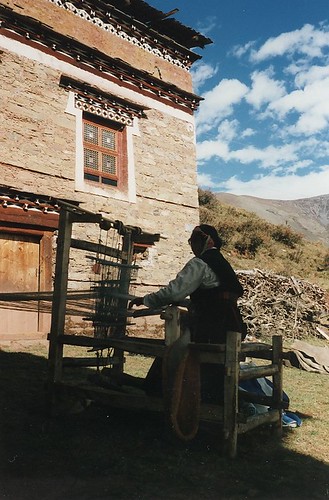
The grandma of the house was spinning wool and making clothes with an ancient loom just like the one seen below.

A loom as seen by Joseph Rock in 1929.
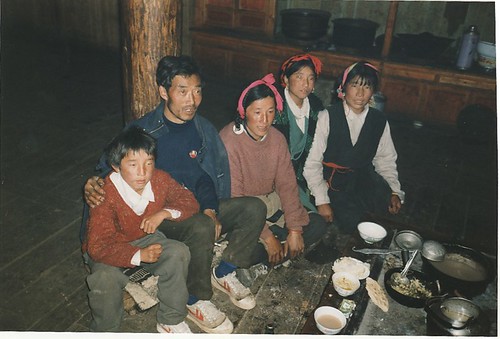
The Tibetan family that acted as our hosts at Yulongsi.

The walls were decorated with a weird tableau of Buddhist and Communist Party deities.
